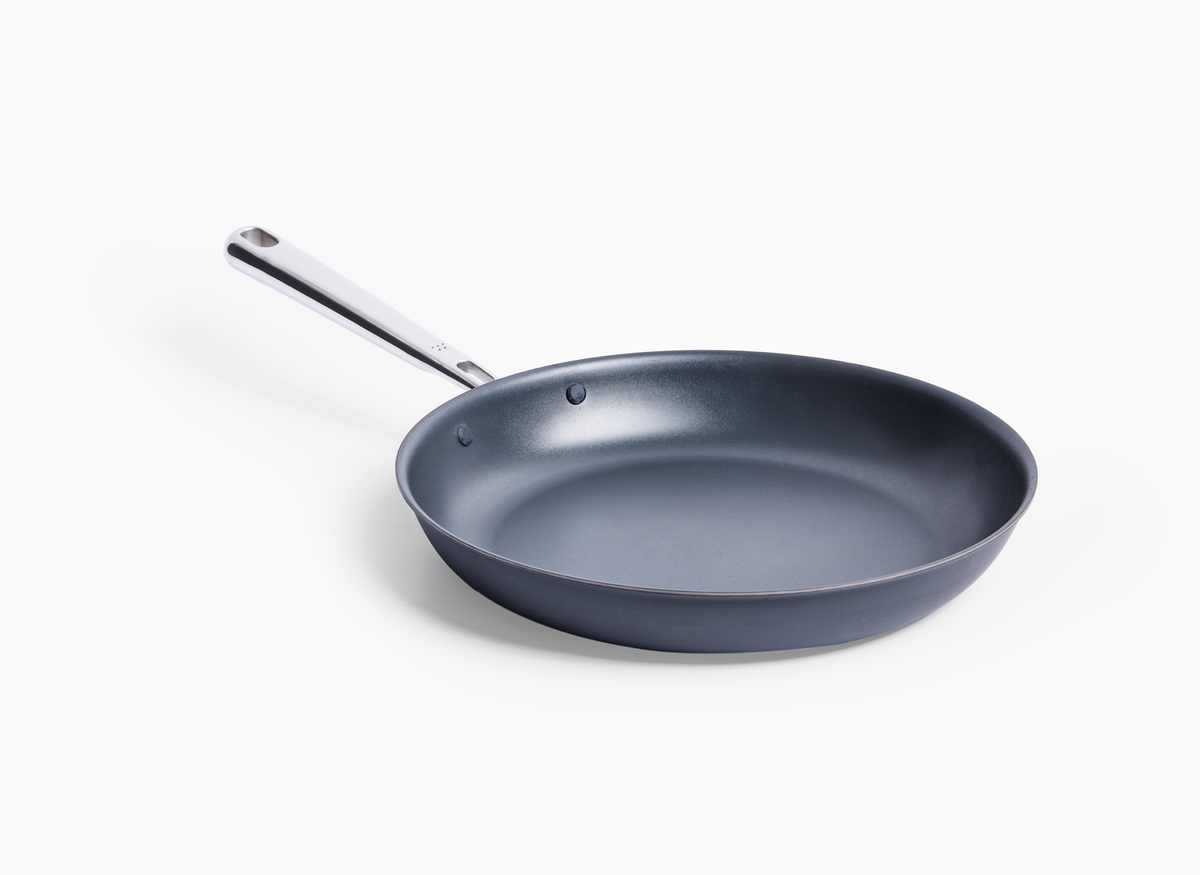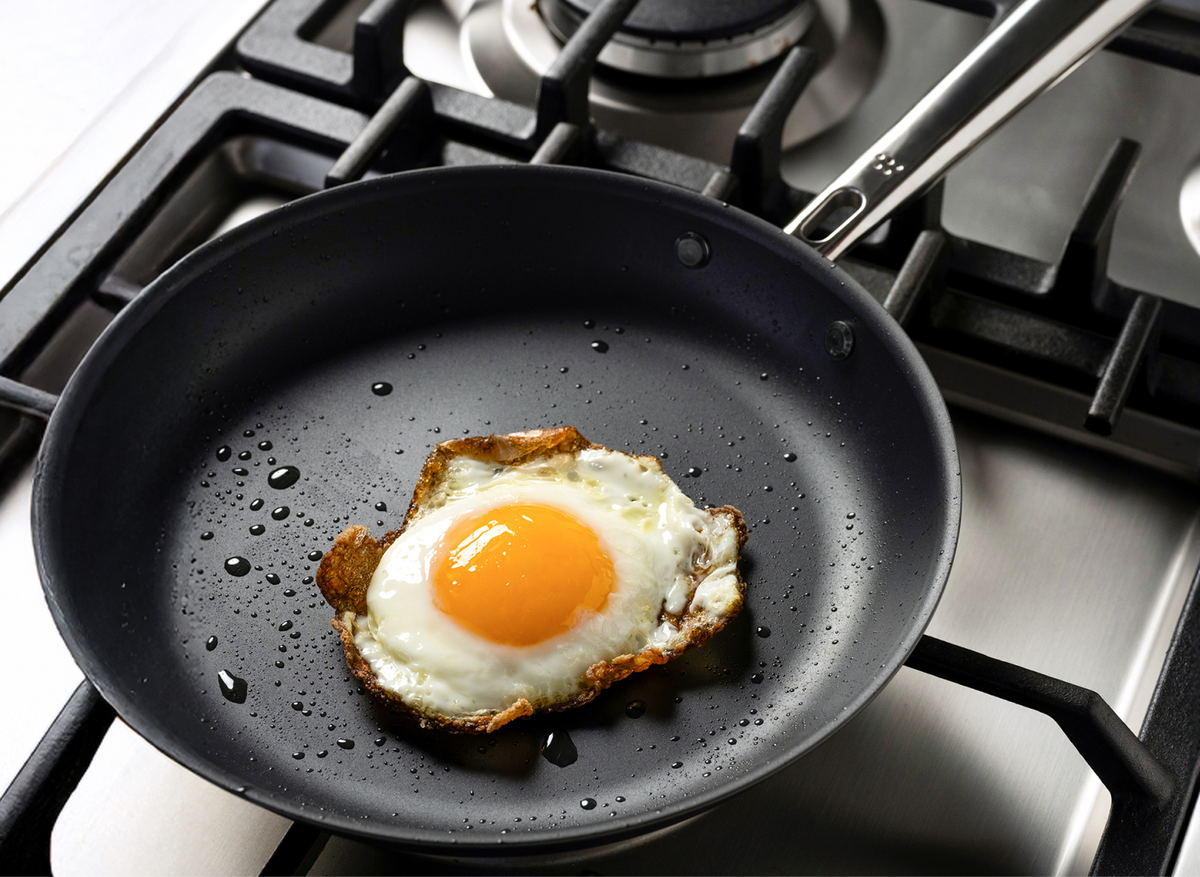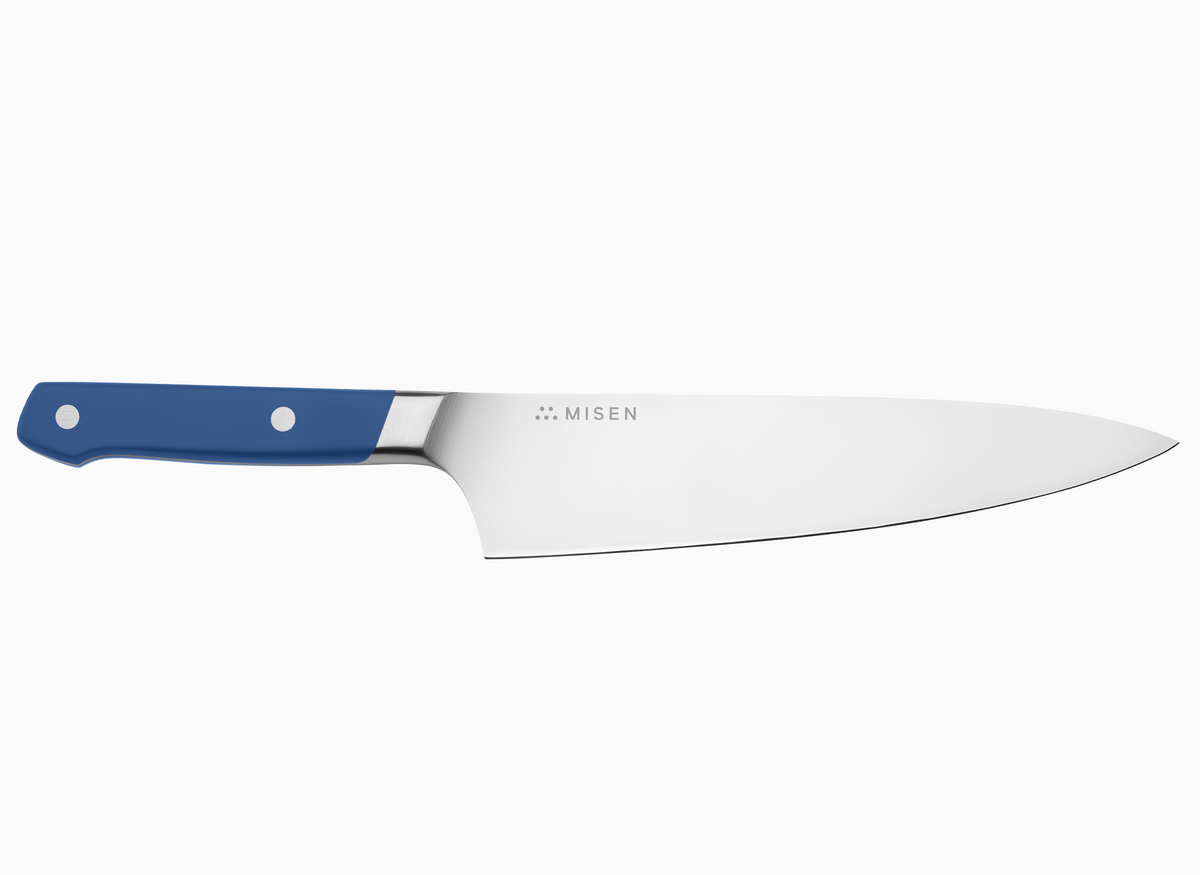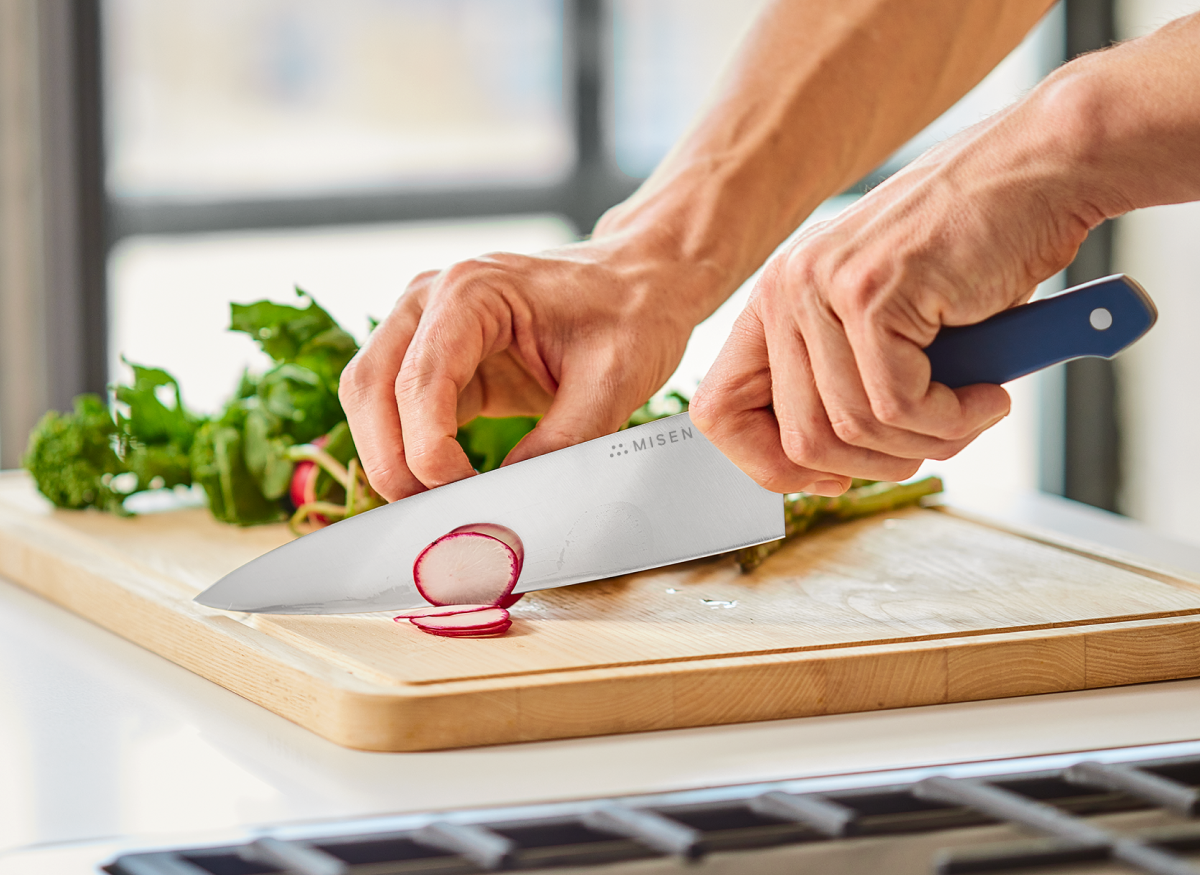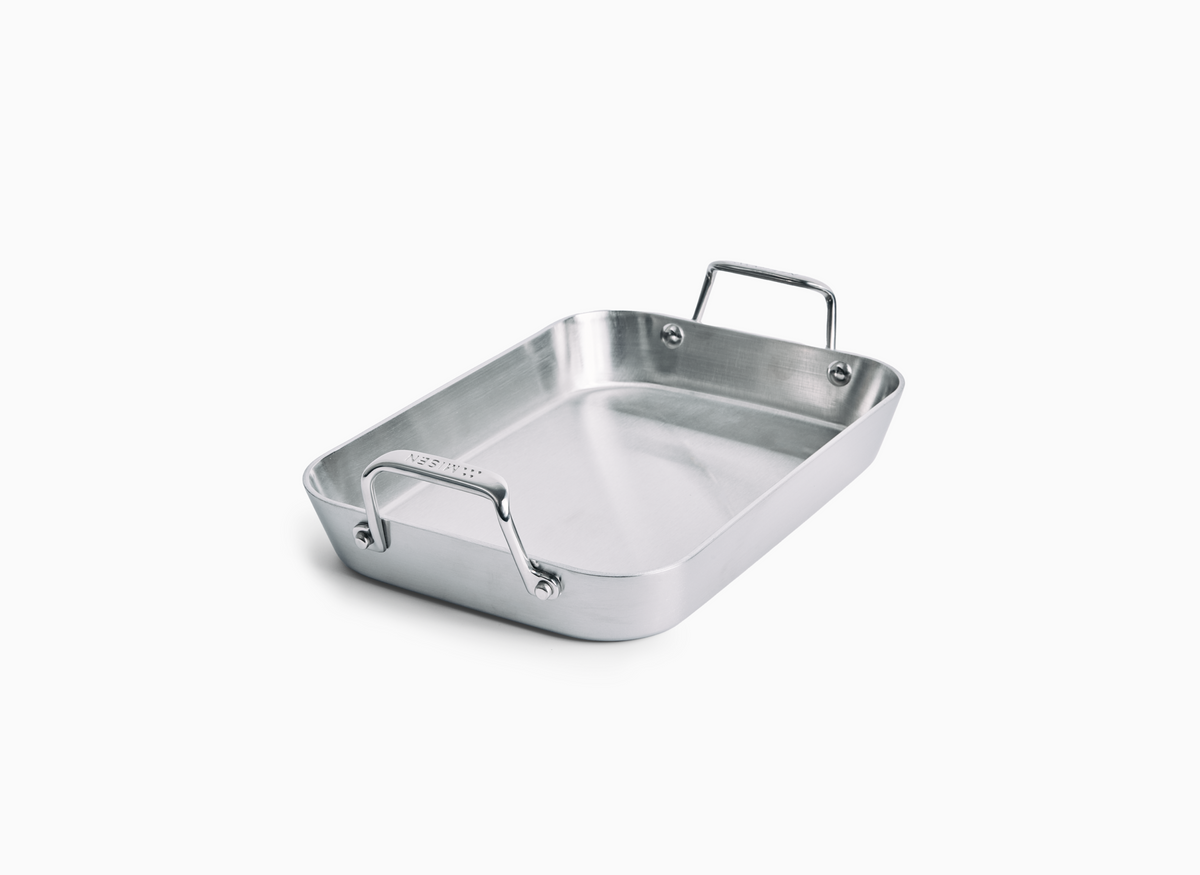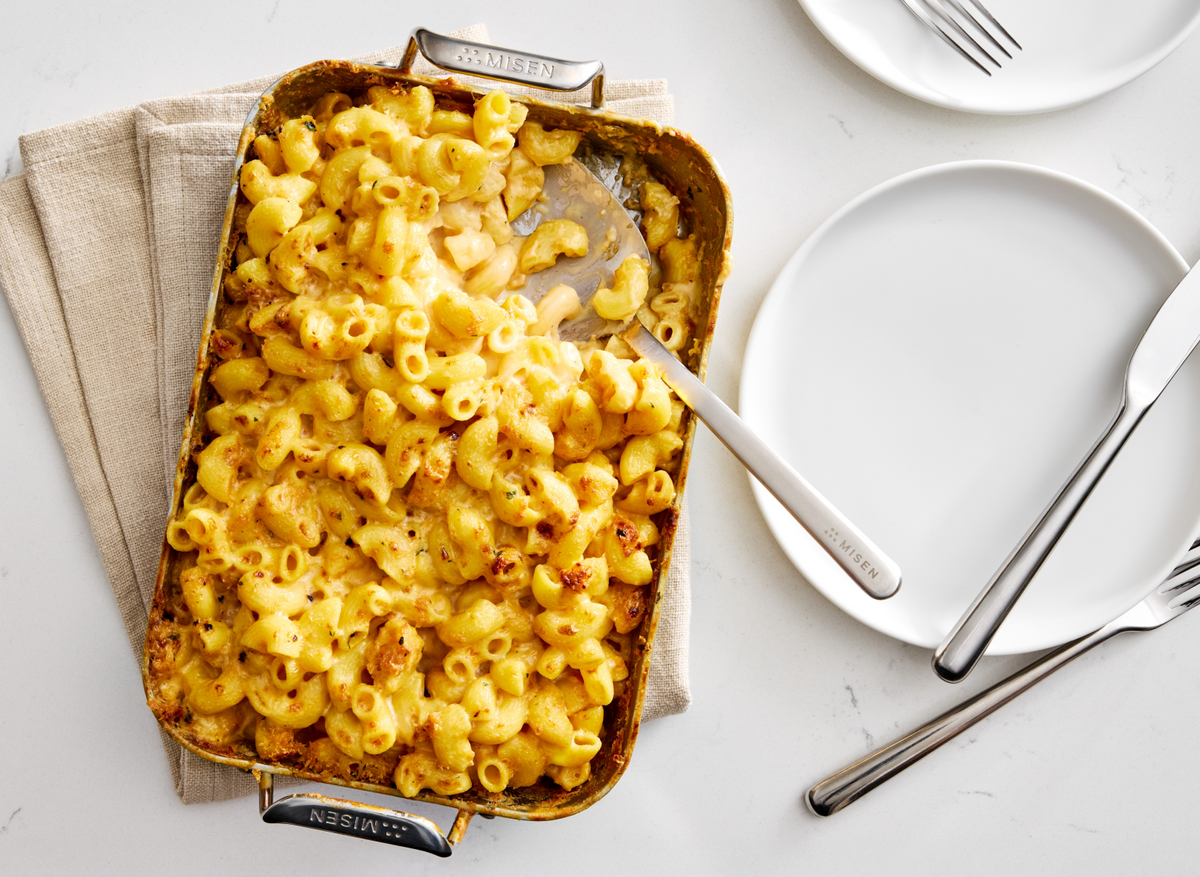What to know before cooking with your Misen Oven Steel
Congratulations on your new Oven Steel! This simple tool is going to help your oven do its job better by producing more even browning and stabilizing hot spots and temperature swings. Plus, it’ll last a lifetime.
But you’ll need to take a few important steps before you start cooking with it.
Seasoning your Oven Steel will prevent it from rusting, and also create a safe surface for direct cooking.
• A clean towel or paper towels
• Seasoning wax or high-smoke-point oil, such as canola, grapeseed, soybean, or vegetable oil
1.Preheat your oven to 400° F.
2.Hand-wash your Oven Steel using soap and hot water. Avoid submerging it, which can cause rusting.
3.Dry it thoroughly, again to prevent rusting.
4.Using the towel or paper towel, apply a thin layer of the seasoning wax or oil to the oven steel, rubbing it evenly all over, continuing until you’ve soaked up the excess. There shouldn’t be any visible wax or oil remaining. The oven steel should look dry—and not shiny, greasy, or wet.
5.Place the oven steel directly on the oven rack and bake for 1 hour.
6.Turn the oven off, and let the Oven Steel cool inside.
Keep Oven Steel in oven 24/7.
Allow extra time for preheating so both the oven and steel come up to temperature — add 10 minutes for one oven steel, 15 for two, and 20 for four.
Use modular configurations to your advantage.
Put on the grill for a flat surface.
Avoid using as stovetop griddle (the Oven Steel does not have a grease trap).
A single steel creates a localized heat battery inside your oven.
Heat from above and below, for even browning top-to-bottom.
Best configuration for using as a pizza steel, plus maximum surface area for regular use.
Unless you cook food directly on your oven steel—using it for pizza or flatbreads, or as a flat-top surface for your grill—you won’t need to worry about cleaning it very often.
Wipe or scrape away any food mess.
If needed, hand wash in warm, soapy water and towel-dry right away.
If washed with soap, re-apply a little oil and place in a warm oven to touch up the seasoning.
Avoid dishwasher—this will strip your seasoning and may cause rusting.
Avoid using as stovetop griddle (the Oven Steel does not have a grease trap).
Your Oven Steel will take on new colors and marks as you cook on it. This is a natural result of regular use. Every oven steel is unique, and no matter how it appears, it’ll produce great results, and last a lifetime.
Seasoning your Oven Steel will prevent it from rusting, and also create a safe surface for direct cooking.
• A clean towel or paper towels
• Seasoning wax or high-smoke-point oil, such as canola, grapeseed, soybean, or vegetable oil
1.Preheat your oven to 400° F.
2.Hand-wash your Oven Steel using soap and hot water. Avoid submerging it, which can cause rusting.
3.Dry it thoroughly, again to prevent rusting.
4.Using the towel or paper towel, apply a thin layer of the seasoning wax or oil to the oven steel, rubbing it evenly all over, continuing until you’ve soaked up the excess. There shouldn’t be any visible wax or oil remaining. The oven steel should look dry—and not shiny, greasy, or wet.
5.Place the oven steel directly on the oven rack and bake for 1 hour.
6.Turn the oven off, and let the Oven Steel cool inside.
Keep Oven Steel in oven 24/7.
Allow extra time for preheating so both the oven and steel come up to temperature — add 10 minutes for one oven steel, 15 for two, and 20 for four.
Use modular configurations to your advantage.
Put on the grill for a flat surface.
Avoid using as stovetop griddle (the Oven Steel does not have a grease trap).
A single steel creates a localized heat battery inside your oven.
Heat from above and below, for even browning top-to-bottom.
Best configuration for using as a pizza steel, plus maximum surface area for regular use.
Unless you cook food directly on your oven steel—using it for pizza or flatbreads, or as a flat-top surface for your grill—you won’t need to worry about cleaning it very often.
Wipe or scrape away any food mess.
If needed, hand wash in warm, soapy water and towel-dry right away.
If washed with soap, re-apply a little oil and place in a warm oven to touch up the seasoning.
Avoid dishwasher—this will strip your seasoning and may cause rusting.
Avoid using as stovetop griddle (the Oven Steel does not have a grease trap).
Your Oven Steel will take on new colors and marks as you cook on it. This is a natural result of regular use. Every oven steel is unique, and no matter how it appears, it’ll produce great results, and last a lifetime.
Welcome to the Misen Oven Steel 101! This guide will walk you through the process of caring for your new Oven Steel, an innovative tool that transforms your oven into a high-performance cooking machine. We'll cover everything from seasoning and cooking to cleaning and versatile configurations. With our helpful tips, your Oven Steel will last a lifetime and help you achieve incredible results in the kitchen. The Misen Oven Steel requires a one-time seasoning to prevent rusting and create a safe surface for direct cooking. This simple process involves applying high-smoke-point oil or seasoning wax, such as canola, grapeseed, soybean, or vegetable oil, and then baking the Oven Steel for one hour at 400° F. When using your Oven Steel, keep it in the oven 24/7, allowing extra time for preheating, and explore various configurations to take full advantage of its capabilities. Avoid using it as a stovetop griddle, as it does not have a grease trap. Cleaning your Oven Steel is usually hassle-free as long as you don't cook food directly on it. Simply wipe or scrape away any mess, and hand wash with warm, soapy water when necessary. Avoid using the dishwasher, which can strip away seasoning and cause rusting. Just like with any high-quality kitchen tool, your Misen Oven Steel will develop a unique patina over time, depending on how you use it. Embrace its one-of-a-kind appearance and enjoy a lifetime of improved oven performance.
Welcome to the Misen Oven Steel 101! This guide will walk you through the process of caring for your new Oven Steel, an innovative tool that transforms your oven into a high-performance cooking machine. We'll cover everything from seasoning and cooking to cleaning and versatile configurations. With our helpful tips, your Oven Steel will last a lifetime and help you achieve incredible results in the kitchen. The Misen Oven Steel requires a one-time seasoning to prevent rusting and create a safe surface for direct cooking. This simple process involves applying high-smoke-point oil or seasoning wax, such as canola, grapeseed, soybean, or vegetable oil, and then baking the Oven Steel for one hour at 400° F. When using your Oven Steel, keep it in the oven 24/7, allowing extra time for preheating, and explore various configurations to take full advantage of its capabilities. Avoid using it as a stovetop griddle, as it does not have a grease trap. Cleaning your Oven Steel is usually hassle-free as long as you don't cook food directly on it. Simply wipe or scrape away any mess, and hand wash with warm, soapy water when necessary. Avoid using the dishwasher, which can strip away seasoning and cause rusting. Just like with any high-quality kitchen tool, your Misen Oven Steel will develop a unique patina over time, depending on how you use it. Embrace its one-of-a-kind appearance and enjoy a lifetime of improved oven performance.
